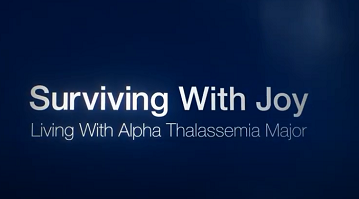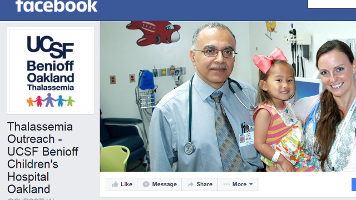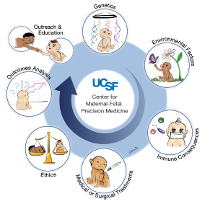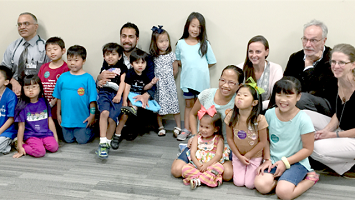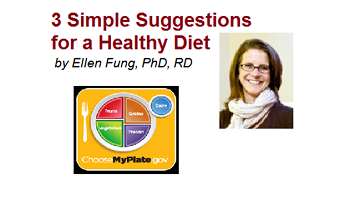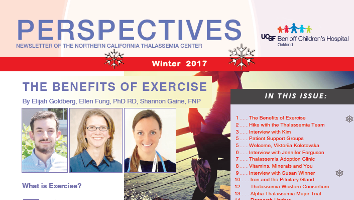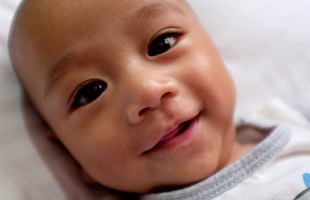"Project Thal":
by Maggie Leinen
September 2013
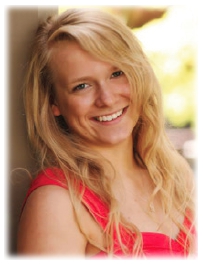
Maggie Leinen
Volunteer
“Thalassemia is a genetic blood disorder that affects the production of the blood’s hemoglobin.”
That was the standard answer I would give whenever someone asked me what thalassemia is. I have always aimed to become a physician
when I am older and was interested when a friend of mine started working with thalassemia last year. I went with her to help at the Children's
Hospital Valentine’s Day party last year and had a great time. That was when I knew that I wanted to be involved with thalassemia.
When I started researching thalassemia, I was just trying to get a feel for the disease. I found an article, “Thalassemia: The Facts and the Controversies,” that gave an overview about thalassemia and how it affects the families that carry the disease. The article gave descriptions of the different types of thalassemia and the treatments. It also discussed how the treatment not only affects the disease itself but also the lives of the people with the disease. The article gave me the base of information I needed to really start delving deeper into thalassemia. It familiarized me with the vocabulary associated with thalassemia and made me more comfortable researching it.
I didn’t fully comprehend how affected the thalassemia community was by unawareness until I read an article about thalassemia patients’ transition from childhood to adulthood. This article brought up the fact that while there are some pediatric thalassemia centers, there are no thalassemia treatment centers for adults in the United States. I was shocked to read this. How could there be no treatment centers for adults? The article went into detail about the issues that thalassemia patients have to deal with in adulthood, like finances, work, and treatment. It discussed the hardships that adults have to deal with during treatment because they can’t do everything in one place anymore. It was this article that really gave me a purpose for my project. This was when I decided to focus on raising awareness.
Since thalassemia is most prominent in nations with high malaria rates, I wanted to research the global affect of thalassemia. I came across an article called, “The inherited diseases of hemoglobin are an emerging global health burden.” I was intrigued by the title. This article got straight to the point of the huge issues that hemoglobin disorders touch on. It discussed how global health organizations have not done much to aid the growing population with inherited hemoglobin diseases. It discussed many things that could be done to help and explained that not a lot can be done without local governments’ belief that the cause is important. The idea relates back to how significant awareness is. This was when I realized that my work went beyond some small project. I think that the United States, as a country, has a responsibility to reach out and help to encourage a global effort. For that to happen, the cause needs to be spread, and communities need to be educated.
After performing all of this research, and with the help of my mentor, Laurice Levine, I was ready to start educating in my community. My partner, Clara Knapp, and I started a project called Project Thal, which is centered on raising awareness in our community. We started giving presentations to grade schools and high schools in our area. The first talk I gave was at a school event for St. Eugene’s, a local K–8 Catholic school in Santa Rosa, California. I am normally very nervous about speaking in front of crowds, and this time was no different, but I was able to talk with more ease than I normally can. I think that because this is something I feel so passionate about, I was able to forget about all of the people. I was surprised at how interested in thalassemia the kids were. They were very curious and asked a lot of questions. I don’t know if it was the adrenaline from speaking in front of a school or just the project itself, but I felt amazing afterward—like I did something good for someone else.
Being my senior year, I have a case of “senior-itis” when it comes to school. Working with thalassemia gave me a purpose. It is something that fascinates me and doesn’t feel like work. Project Thal has opened my eyes to the world around me and will make me a better worker in the future. It is my hope that I can help make a change in the thalassemia community like it has done for me.
Bibliography:
- Catlin J., Martin, Marie. “Thalassemia: The Facts and the Controversies.” Pediatric Nursing 6(2003):447.
- Musallam, K., M.D. Cappellini, and A. Taher. “Challenges Associated With Prolonged Survival of Patients With Thalassemia: Transitioning From Childhood to Adulthood.” Pediatrics 121.5 (2008): E1426-1429. Print.
- Weatherall, D.J. “The inherited diseases of hemoglobin are an emerging global health burden.” Blood. 115.22 (2010): 4331-336. Print.
Maggie Leinen is currently a senior at Cardinal Newman High School in Santa Rosa, California. After she graduates this May, she will be attending college at Baylor University in Waco, Texas. She plans on studying pre-medical and hopes to become a pathologist in the future.

